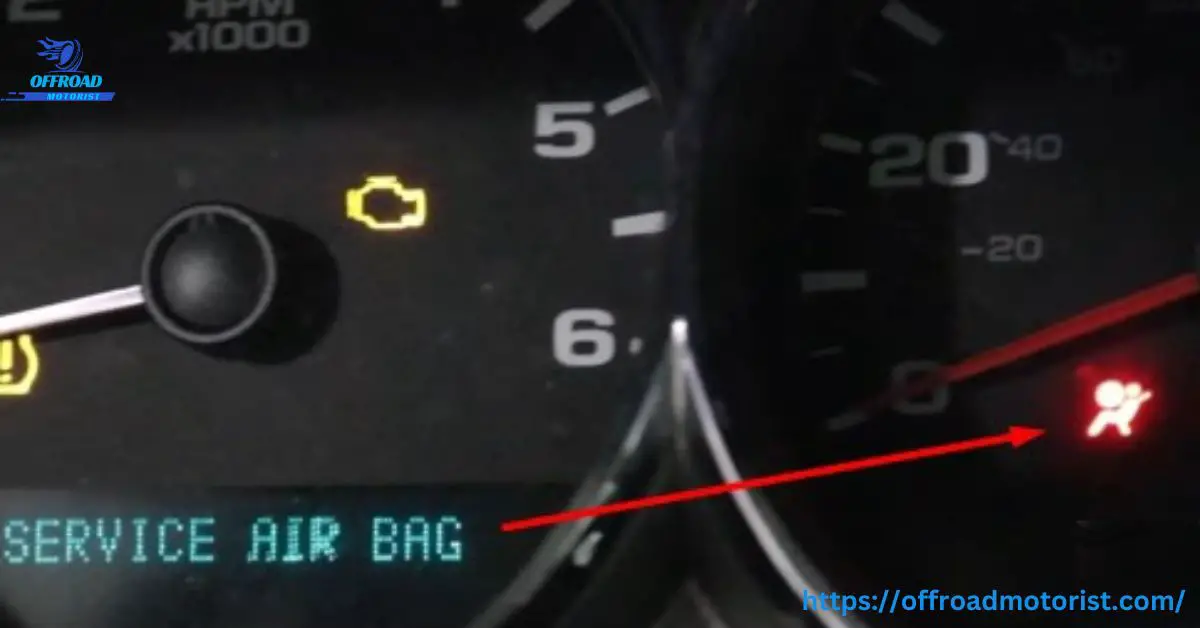Can Low Brake Fluid Cause StabiliTrak Problems? How to Solve StabiliTrak Troubles!

What StabiliTrak system is in Chevrolet vehicles
The StabiliTrak system in Chevrolet vehicles is a form of Electronic Stability Control (ESC) that enhances the vehicle’s stability and helps the driver maintain control of the vehicle under various driving conditions.
StabiliTrak system continuously monitors the vehicle’s movement and compares it to the driver’s intended path.
In the event of oversteer or understeer, the StabiliTrak system automatically applies individual brakes to specific wheels to bring the vehicle back to its intended path and prevent skidding or loss of control.
It integrates with other systems, such as ABS (Anti-lock Braking System) and traction control, to provide maximum stability and safety while driving.
This technology helps drivers stay safe on the road and can be particularly useful in sudden turns, rough roads, or other unpredictable driving conditions.
Overall, the StabiliTrak system is a valuable safety feature that provides added peace of mind and security while behind the wheel of a Chevrolet vehicle.
Can Low Brake Fluid Cause StabiliTrak Problems?
Low brake fluid levels can cause StabiliTrak problems in a Chevrolet vehicle. Let’s know about this in detail by exploring the role of brake fluid, the effects of low brake fluid & how low brake fluid affects the stability control system:
The role of brake fluid in the StabiliTrak system:
Brake fluid is a critical component of the StabiliTrak system in Chevrolet vehicles. The system uses brake fluid to apply the brakes to individual wheels.
So that it can help correct oversteering or understeering and maintain stability and control of the vehicle.
The brake fluid is responsible for transmitting hydraulic pressure from the brake pedal to the brake calipers, which in turn, apply the brakes to the wheels.
Effects of low brake fluid on the StabiliTrak system:
If the brake fluid level is too low, the StabiliTrak system will not be able to function properly. A malfunctioning StabiliTrak can reduce the system’s effectiveness in maintaining stability and control of the vehicle.
As a result, making it more difficult for the driver to steer and respond to driving conditions. Low brake fluid levels can also cause the StabiliTrak system to activate unexpectedly.
If the system activates unexpectedly, leading to a reduction in steering control and an increased risk of accidents.
How low brake fluid affects the stability control system:
Low brake fluid levels reduce the pressure transmitted from the brake pedal to the brake calipers.
This pressure reduction affects the StabiliTrak system’s ability to apply the brakes to individual wheels, reducing its effectiveness in correcting oversteer or understeer and maintaining stability and control of the vehicle.
Furthermore, low brake fluid levels can cause the stability control system to activate unexpectedly, leading to a reduction in steering control and an increased risk of accidents.
Signs of low brake fluid in Chevrolet Vehicles
Several signs can indicate low brake fluid levels in your vehicle:
01. Warning Light:
Most vehicles have a warning light on the dashboard that will illuminate if the brake fluid level is too low.
The brake fluid warning light typically appears as a circle with an exclamation point inside or a picture of a brake fluid reservoir with a low fluid level indicator.
02. Soft Brake Pedal:
If the brake fluid level is low, the brake pedal may feel spongy or soft when pressed. Soft Brake Pedals can indicate a lack of pressure in the brake system.
03. Grinding or Squealing Noises:
If the brake pads are worn too thin, they may make grinding or squealing noises when applied. Grinding or Squealing noises can also indicate low brake fluid levels and other brake system issues.
04. Vehicle Pulling to One Side:
If the brake fluid levels are low, the vehicle may pull to one side when braking, indicating that one set of brakes is not functioning properly.
Note: Regularly check the brake fluid level and refill as needed to ensure the brake system is functioning properly.
Solving low brake fluid issues in Chevrolet Vehicles
Solving low brake fluid issues involves several steps to ensure the brake fluid level is at the proper level and the StabiliTrak system is functioning correctly. You can follow these steps to solve low brake fluid issues:
Step 01: Check the brake fluid level
The first step in solving low brake fluid issues is to check the level of brake fluid in the reservoir. Checking the brake fluid level can typically be done by removing the reservoir cap and using a dipstick to measure the fluid level inside.
Step 02: Refill the brake fluid
If the brake fluid level is low, add the correct type of brake fluid specified by the vehicle manufacturer until the level reaches the “Full” mark on the dipstick.
Step 03: Bleed the brakes
After refilling the brake fluid, it may be necessary to bleed the brakes to remove any air bubbles that may have entered the system. Bleeding the brakes is typically done by a professional using a brake bleeder tool.
Step 04: Check for leaks
After refilling the brake fluid and bleeding the brakes, it is important to check for leaks in the brake system. Check for any leaks by inspecting the brake lines and calipers for any signs of fluid leaks.
Step 05: Test the brakes
After completing the above steps, it is important to test the brakes to ensure they are functioning correctly. Check the brakes by pressing the brake pedal slowly to see if it feels firm and responsive.
Step 06: Have the vehicle inspected by a professional
A professional must inspect the vehicle if you need help to refill the brake fluid, bleed the brakes, or check for leaks.
They will be able to diagnose any issues with the brake system and make any necessary repairs to ensure the StabiliTrak system is functioning correctly.
Note: Neglecting low brake fluid levels can negatively impact the performance of the StabiliTrak system and increase the risk of accidents.
StabiliTrak troubles in Chevrolet Vehicles
StabiliTrak troubles refer to issues or problems with the stability control system in Chevrolet vehicles. The following are some common problems identified in Chevrolet Vehicles:
01. StabiliTrak warning light:
The StabiliTrak warning light on the dashboard will illuminate if there is an issue with the stability control system. This could be due to low brake fluid levels, problems with the tires, suspension, or other components, or an issue with the StabiliTrak system itself.
02. StabiliTrak system inactive:
If the StabiliTrak system is inactive, the vehicle may not respond properly in emergencies, reducing stability and control.
This can be due to low brake fluid levels, problems with the sensors or control module, or other issues with the system.
03. Inconsistent StabiliTrak performance:
If the StabiliTrak system is not functioning consistently, it can cause instability and reduce control in certain driving conditions.
Inconsistent StabiliTrak performance can be due to issues with the sensors, control module, or other system components.
04. StabiliTrak turning off unexpectedly:
If the StabiliTrak system turns off unexpectedly, it can cause instability and reduce control in certain driving conditions. Sudden turn-off can be due to issues with the sensors, control module, or other system components.
Note: These are some common Chevrolet StabiliTrak troubles drivers may experience.
Solving Chevrolet StabiliTrak troubles
Solving StabiliTrak troubles is important for ensuring the stability and control of the vehicle, reducing the risk of accidents, and providing peace of mind for Chevrolet owners.
StabiliTrak troubles in a Chevrolet vehicle involve several steps to diagnose and address the issue with the stability control system. The following steps will guide you in solving StabiliTrak troubles:
Step 01: Check the brake fluid level
The first step in solving StabiliTrak troubles is checking the reservoir’s brake fluid level. Low brake fluid levels can impact the performance of the StabiliTrak system, so it is important to ensure the fluid level is at the proper level.
Step 02: Check the tire pressure
Proper tire pressure is crucial for the StabiliTrak system to function correctly. Check the tire pressure and adjust if necessary to ensure all tires are at the recommended pressure.
Step 03: Check for worn tires
Worn tires can affect the vehicle’s stability, so it is important to inspect the tires for any signs of wear or damage. If the tires are worn or damaged, replace them as soon as possible.
Step 04: Check the suspension
The suspension system is critical for maintaining stability and control of the vehicle. Check the suspension for any signs of damage or wear, such as leaks, worn bushings, or loose components. Any issues with the suspension should be repaired promptly.
Step 05: Have the StabiliTrak system diagnosed
If the above steps do not resolve the StabiliTrak troubles, a professional may need to diagnose the stability control system. They will be able to diagnose any issues with the system and make any necessary repairs to ensure the StabiliTrak system is functioning correctly.
Step 06: Have the vehicle inspected
If the StabiliTrak troubles persist, it is recommended to have the vehicle inspected by a professional. They will be able to diagnose any vehicle issues and make necessary repairs to ensure the StabiliTrak system is functioning correctly.
FAQs StabiliTrak problems in Chevrolet Vehicles
In this session, we generated a comprehensive set of FAQs on StabiliTrak problems in Chevrolet Vehicles & related issues. This information will be valuable in helping you keep your vehicle running smoothly and safely. So let’s get started.
Can StabiliTrak cause brake problems?
Yes, StabiliTrak can be the cause of brake problems if it’s malfunctioning. The system is designed to help with stability and traction control, but if it’s not working properly, it could affect the brakes.
What does code C0267 mean?
The C0267 code indicates that there’s a low level of brake fluid in the system. It’s important to address this issue as soon as possible to ensure proper brake function.
What is the “service brake system” warning message?
The “service brake system” warning message is related to the StabiliTrak system and indicates a problem with the brakes. Low brake fluid, a malfunctioning component, or an issue with the StabiliTrak system itself could cause it.
What does “service StabiliTrak” mean?
The “service StabiliTrak” message means an issue with the StabiliTrak system that requires attention. It could be a malfunction or an error in the system.
Why does the check engine light come on with StabiliTrak issues?
The check engine light may come on with StabiliTrak issues because the StabiliTrak system is integrated with the engine control system. If there’s a problem with the StabiliTrak system, it could trigger a check engine light.
What is the relationship between ABS, traction control, and StabiliTrak?
ABS (Anti-lock Braking System), traction control, and StabiliTrak are related systems that work together to improve the stability and safety of a vehicle.
ABS helps prevent wheel lockup during braking, traction control helps maintain traction on slippery surfaces, and StabiliTrak helps with stability and control.
Can I turn off StabiliTrak in my Chevy?
In most vehicles, the StabiliTrak system can be turned off. However, it is not recommended to do so, as the system is designed to enhance safety.
What should I do if my StabiliTrak light comes on?
The light indicates an issue with the system that needs to be addressed. If the StabiliTrak light comes on, it’s best to have the vehicle inspected by a professional mechanic as soon as possible.
How often should the StabiliTrak system be checked?
It’s recommended to have the StabiliTrak system checked at least once a year as part of regular maintenance. Additionally, if you notice any warning lights or issues with the system, it’s best to have it inspected immediately.
Can I still drive my vehicle if the StabiliTrak light is on?
It’s best to avoid driving the vehicle if the StabiliTrak light is on, as the system may not function properly. Driving with a malfunctioning StabiliTrak system could negatively impact stability and control, making driving unsafe.
Is it expensive to fix the StabiliTrak system?
The cost of fixing the StabiliTrak system can vary depending on the cause of the problem. In some cases, it may be a simple and inexpensive fix, while in others, it may require a more extensive repair.
It’s best to have a professional mechanic diagnose the issue to determine the repair cost.
How can I maintain the StabiliTrak system to prevent problems?
It’s important to follow the manufacturer’s recommended maintenance schedule and to have the system inspected regularly.
Keeping the brake fluid at the proper level, regularly checking for worn or damaged components, and promptly addressing any issues can help prevent problems with the system.
Does StabiliTrak affect the performance of the brakes?
No, the StabiliTrak system should not affect the performance of the brakes. The system is designed to enhance the performance of the brakes by improving stability and control in certain driving situations.
What happens if the StabiliTrak system fails while driving?
If the StabiliTrak system fails while driving, the vehicle’s stability and control could be negatively affected. Driving with a malfunctioning StabiliTrak system could be dangerous and increase the crash risk.
Final thoughts and recommendations for Chevrolet owners
Maintaining proper brake fluid levels is essential to ensure the StabiliTrak system functions correctly and provides the stability and control needed in your car.
Taking care of the brake fluid levels in your Chevrolet vehicle can help prevent StabiliTrak problems and ensure the stability and control needed for safe driving.
Regular vehicle maintenance and inspections can help ensure the StabiliTrak system is functioning correctly, reducing the risk of accidents and providing peace of mind for Chevrolet owners.






